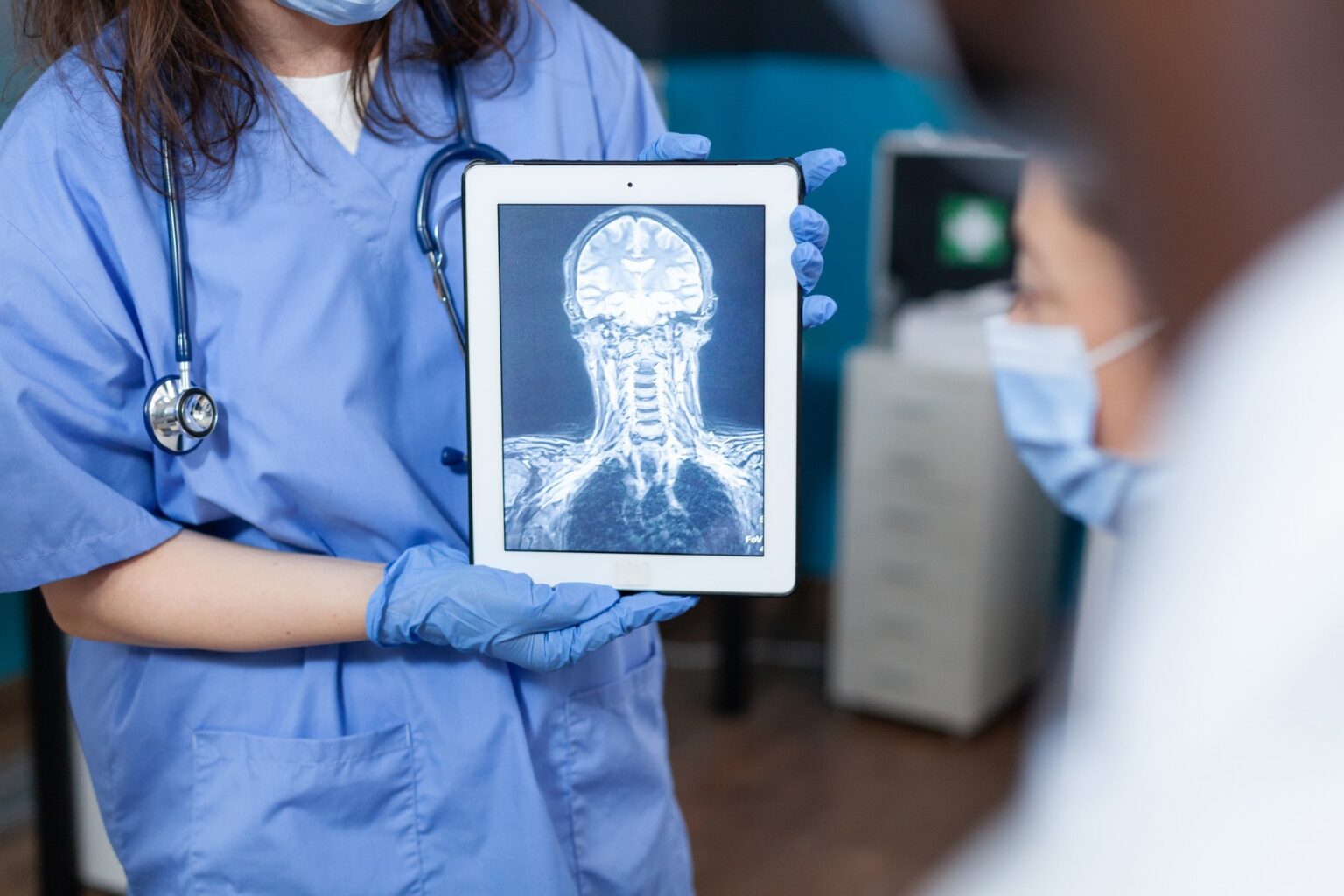Medical imaging has witnessed significant advancements, driven by technological innovations and the integration of artificial intelligence (AI). These advancements have led to high-resolution scans and AI-assisted diagnostics, revolutionizing medical imaging and improving patient care. Here are some key aspects of these advancements:
- High-Resolution Imaging: Medical imaging technologies, such as magnetic resonance imaging (MRI), computed tomography (CT), and ultrasound, have seen improvements in image quality and resolution. Higher-resolution scans provide clearer and more detailed images, allowing healthcare professionals to visualize anatomical structures with greater accuracy. This facilitates more precise diagnoses, treatment planning, and monitoring of diseases.
- Multimodal Imaging: Integration of different imaging modalities, such as combining MRI and CT scans, offers complementary information and a more comprehensive understanding of the patient’s condition. Multimodal imaging improves the accuracy of diagnoses and enhances the evaluation of complex diseases or conditions that involve multiple body systems.
- Functional Imaging: Functional imaging techniques, such as functional MRI (fMRI), positron emission tomography (PET), and single-photon emission computed tomography (SPECT), provide insights into the functional aspects of organs and tissues. These techniques allow for the assessment of blood flow, metabolism, and brain activity, aiding in the diagnosis and treatment of conditions like tumors, neurodegenerative disorders, and psychiatric illnesses.
- Molecular Imaging: Molecular imaging combines imaging techniques with the use of specific molecular tracers to visualize biological processes at the cellular and molecular levels. Techniques like PET, SPECT, and targeted MRI enable the visualization of specific molecules, receptors, or biological processes. Molecular imaging is valuable in diagnosing and monitoring diseases, assessing treatment response, and guiding personalized therapies.
- AI-assisted Image Analysis: Artificial intelligence and machine learning algorithms are being increasingly utilized to assist in medical image analysis. AI algorithms can analyze vast amounts of imaging data, detect patterns, and provide quantitative measurements. AI-assisted diagnostics aid radiologists and clinicians in detecting abnormalities, making more accurate diagnoses, and predicting patient outcomes. It can also help prioritize urgent cases, streamline workflow, and reduce interpretation errors.
- Computer-Aided Detection and Diagnosis (CAD): CAD systems are designed to highlight areas of concern on medical images, assisting radiologists in the detection of abnormalities. CAD algorithms can analyze mammograms, chest X-rays, and other images to identify potential abnormalities, such as tumors or nodules. By acting as a “second pair of eyes,” CAD systems enhance the accuracy and efficiency of image interpretation.
- Image-Guided Interventions: Medical imaging plays a vital role in guiding minimally invasive procedures and interventions. Real-time imaging, such as fluoroscopy, ultrasound, and CT-guided navigation, enables precise targeting of treatment sites, needle placements, and the monitoring of interventions. This improves the safety, efficacy, and outcomes of procedures, while reducing invasiveness and patient discomfort.
- Quantitative Imaging Biomarkers: Advanced image analysis techniques, combined with AI algorithms, enable the extraction of quantitative imaging biomarkers from medical images. These biomarkers provide objective and measurable indicators of disease characteristics, treatment response, and prognostic information. Quantitative imaging biomarkers assist in treatment planning, monitoring disease progression, and evaluating the effectiveness of therapies.
- Image Sharing and Telemedicine: Digitalization and cloud-based storage systems have facilitated efficient sharing and remote access to medical images. This has improved collaboration among healthcare providers, enabling faster consultations, second opinions, and multidisciplinary discussions. Telemedicine applications also allow remote image interpretation and consultation, extending access to specialized care in underserved areas.
- Radiation Dose Reduction: Efforts have been made to reduce radiation exposure in imaging techniques that use ionizing radiation, such as CT scans. Advanced hardware and software solutions, like iterative reconstruction algorithms and optimized scanning



